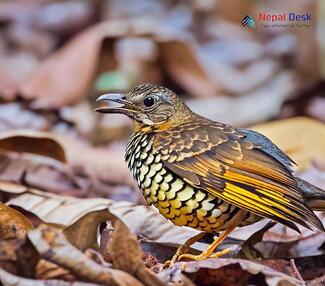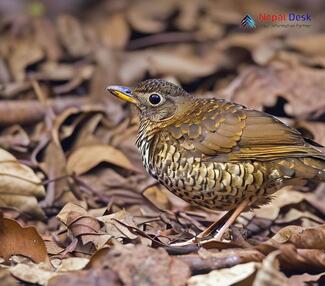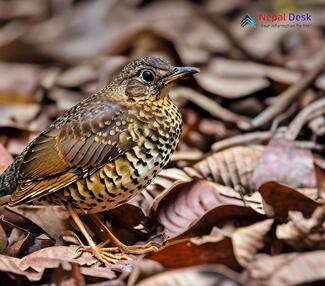Scaly thrushes, scientifically known as Zoothera dauma, are fascinating songbirds that attract birdwatchers and enthusiasts from around the world. With their distinctive features and intriguing behavior, these elusive creatures present a beautiful sight in their natural habitats. In this article, we'll explore the taxonomy, physical features, habitat, diet of scaly thrushes, and their presence in Nepal.
Taxonomy
Belonging to the Turdidae family and Zoothera genus within the class Aves, scaly thrushes share some common characteristics with other thrush species. They are classified under the Zoothera dauma species complex which includes several subspecies with varying features across their vast range. Some of these subspecies make seasonal migrations and can even be spotted in certain parts of Europe during their migration patterns.
Physical Features
Scaly thrushes have a unique appearance with distinct scaling patterns on their plumage. Their upper parts typically display brown or greyish tones with a scaly effect achieved through darker feather centers. The underparts exhibit paler shades with narrow dark streaks on the throat and breast that transform into wide dark scales on the belly and flanks. They have relatively long legs and a fairly short tail. Additionally, both sexes display similar colors and patterns— making it difficult to distinguish between male and female birds.
Habitat
These elusive songbirds inhabit dense undergrowth in mature forests—both deciduous and evergreen—across much of Asia. Their habitat stretches from the foothills of the Himalayas through northern India, China, Southeast Asia, Japan, and even some parts of Russia. They prefer cool temperatures found at elevations ranging from 700m to 3200m (2300ft to 10500ft), primarily seeking dense undergrowth and low bushes for shelter.
Diet
Scaly thrushes feed primarily on invertebrates such as insects, spiders, and earthworms they find on the forest floor. They are known to forage in leaf litter, flicking leaves aside with their bill to uncover their prey. Opportunistic feeders, they occasionally consume small fruits and seeds when available.
Presence in Nepal
Nesting primarily in the eastern Himalayas, scaly thrushes can be sighted across several regions of Nepal. Birdwatchers can spot them in various protected areas like Langtang National Park, Makalu-Barun National Park, and Annapurna Conservation Area. Their harmonious songs echoing across dense undergrowth make them an enthralling attraction for nature enthusiasts and researchers alike.
Conclusion
Scaly thrushes are exceptional birds that exhibit remarkable features in both appearance and behavior. Their unique scaling patterns provide a visually captivating experience for birdwatchers, while their distinctive songs add a serene soundtrack to the already breathtaking forests of Nepal. With increased understanding and awareness, we can ensure the conservation of these incredible creatures and protect their habitats for future generations to appreciate.




